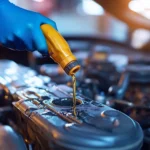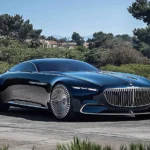Why EPA's New Vehicle-Related Mandates Are a Big Deal
Although the world is moving toward addressing climate change and reducing carbon emissions, pioneers in doing so, such as the Environmental Protection Agency (EPA) have introduced a radical environmental development within their initiative focused on over-turning standards set for pollutants by leading automakers. Last we heard from The General, "more than half" of all new U.S. vehicles will be EVs or hybrids by 2032 according to their latest proclamation The change signifies a big step forward in building green transport and concurs with the environmental preservation of national goals as well.
The Importance of the Shift
The automotive industry has been one of the greatest offenders regarding greenhouse gas emissions. Its continued push to see more EVs and hybrids on our roads once again mean that the EPA is determined not just save those lovely polar bears, but also clean up our local air quality by reducing emissions of pollutants which contribute significantly towards climate change. This policy not only confronts environmental issues but also paves the way for more technological and infrastructural developments that will work towards a greener society.
Rechargeable or hybrid cars offer numerous benefits, including the following:
Beyond this, electric and hybrid vehicles have a host of other appealing benefits over gas cars as well. A few of such advantages are as follows:
- Greenhouse Gas: EVs do not emit greenhouse gases from their tailpipe. Conventional vehicles emit considerably more than the usual which also holds for hybrids running on gasoline.
- Less Expensive Overall: While electric cars might cost more to purchase upfront, the price is often set off by reduced fuel costs and fewer moving parts.
- Economic Sustainability: Electric and hybrid cars are highly energy-efficient minimizing waste of valuable, nonrenewable fuels.
The Path Forward
Automakers are investing heavily in R&D to enhance the functionality and drive adoption of EVs and hybrids, which marks a sign that this transition will be carried out. At the same time, its government is finally offering some of the support measures enjoyed by buyers in many other countries; those include tax incentives, grants for EV infrastructure and money behind clean energy initiatives.
The battery technology, charging stations and alternative energy sources qualified by the EPA is certainly reason to cheer for partnerships between public agencies and private entities — this mandate will no doubt spawn innovation.
Challenges on the Horizon
Although the directive is moving in an encouraging direction as far as transport sustainability, there are several concerns that note consideration. At the moment, where EVs are booming right now have electric grids that also need to be upgraded. We are also looking at needing to overcome both range anxiety and concerns about how the batteries could be produced in order for consumers accept this change.
Conclusion
This is a groundbreaking development for the future of transportation where emissions are concerned. As a warming planet challenges the most basic of our means, cars have begun to adapt or perish This is an ambitious target that—by our choosing to meet it—we collectively take important steps towards a brighter future, lowering emissions and incorporating cleaner technologies. We have a lot of opportunities in front, and we can hold hands to drive towards a new clean world!







